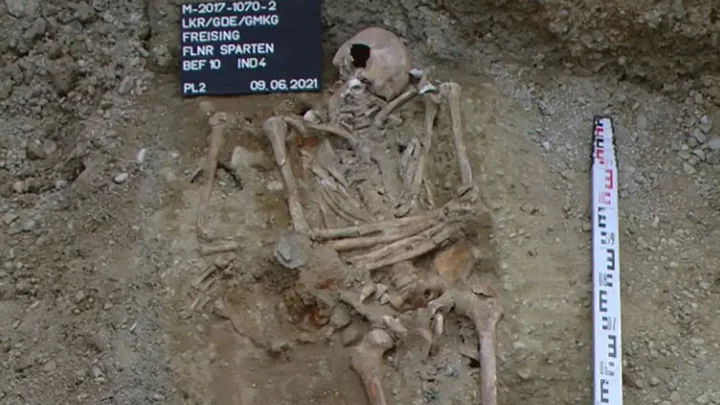If you thought prosthetic hands were too advanced for people living hundreds of years ago, think again.
Archaeologists have found the remains of a man who died in Medieval Germany, who had prosthetics in place of several fingers. The grave was found by pipeline workers in Freising, a town near Munich.
The Bavarian State Office for Monument Preservation said: “Even for experienced archaeologists, this was a particularly special find: a skeleton in which parts of the fingers of its left hand are missing.”
The archaeologists removed the metal from the man’s skeleton to restore and analyse it. They came to the conclusion that he had lost his fingers at some point in his life.
Walter Irlinger, deputy of the general conservator at BSOMP, said: “The hollow prosthetic on the left hand replaced four fingers. The index, middle, ring and pinky fingers are individually formed out of sheet metal and are immobile. The prosthetic fingers lie slightly curved, parallel to one another.”
The prosthetic also had scraps of fabric and leather, suggesting that the fingers had a leather cover, and were tied to the hand using straps.
There was also a gauze-like material inside the fingers, which may have acted as a cushion for the man’s skin from contact with the metal.
That period of German history included the Thirty Years’ War, which ended in 1648, which would have increased the need for amputations and prosthetics.
One of the most famous amputees from the time was Götz von Berlichingen – or “Götz of the Iron Hand”. He was a German knight who lost his right hand from a cannon injury at the siege of Landshut in 1504.
“In the past, prosthetics looked very much like what they were replacing,” said Jacky Finch, a researcher in the KNH Center for Biomedical Egyptology at the University of Manchester.
“Nowadays, implants are placed in the sensory system to control nerve action, rather than devices attached to the body by straps or artificially powered.”
The BSOMP statement continued: “Doctors at that time were already thinking about how they could make life easier for amputees.
“In central Europe, there are currently around 50 similar prostheses from the late middle ages to early modern age that are known.”
How to join the indy100's free WhatsApp channel
Sign up to our free indy100 weekly newsletter
Have your say in our news democracy. Click the upvote icon at the top of the page to help raise this article through the indy100 rankings.

